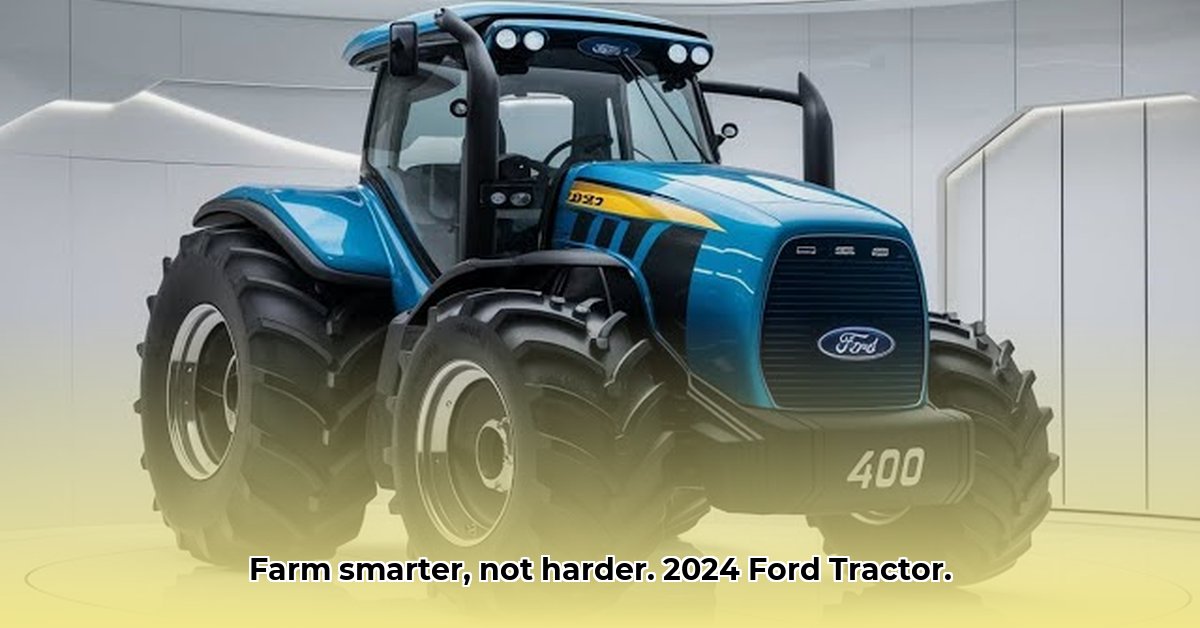
A Legacy of Innovation in a Changing Landscape
The Ford name is synonymous with American ingenuity, and its impact on agriculture is undeniable. Since introducing the Fordson tractor in 1917, Ford revolutionized farming, making mechanized agriculture accessible to smaller operations. This democratization of farming significantly altered agricultural practices and global food production. However, understanding Ford's current contribution to sustainable farming practices requires navigating a complex landscape. Ford no longer manufactures tractors under its own brand; its legacy is now intertwined with New Holland Agriculture, raising questions about its role in environmentally conscious farming. For more on Ford's early tractors, check out this Ford tractor history. This article delves into the history, revealing the challenges and opportunities in assessing the environmental impact of Ford's agricultural legacy as it manifests in modern New Holland tractors.
The Ford Legacy and the New Holland Connection
Ford's direct involvement in tractor manufacturing ended with its strategic partnership with New Holland Agriculture, a part of CNH Industrial. While the iconic Fordson and other vintage models remain testaments to Ford's engineering prowess and enduring legacy, finding a brand-new tractor bearing the Ford name is close to impossible. This complicates the assessment of Ford's current contribution to sustainable agricultural practices. The focus shifts to evaluating New Holland's sustainability initiatives as the current custodian of Ford's agricultural heritage. How successfully does New Holland incorporate sustainable principles into their tractor designs and manufacturing processes?
Sustainability on the Farm: Evaluating Modern Machinery
Assessing the environmental impact of modern, New Holland-produced tractors is a multifaceted undertaking that requires a comprehensive approach, going beyond simple fuel efficiency metrics. Several key factors demand consideration:
Fuel Efficiency and Emissions
Determining the precise fuel efficiency and emissions of New Holland tractors requires access to comprehensive, independently verified data, which is currently limited. While advancements in engine technology have improved fuel economy compared to older Fordson models, a comprehensive comparison against competitors is needed for a conclusive assessment. This lack of readily available data hinders a complete understanding of their environmental footprint. How can we ensure greater transparency in reporting fuel consumption and greenhouse gas emissions from agricultural machinery?
Manufacturing Processes and Supply Chain Transparency
The sustainability of a tractor extends beyond its operational lifespan. The manufacturing process, including material sourcing, energy consumption, and waste management, significantly influences its overall environmental impact. A lack of complete transparency regarding New Holland's supply chain makes a thorough assessment challenging. What measures can be implemented to bolster supply chain transparency within the agricultural machinery industry?
Durability and Longevity vs. Environmental Impact
The durability and longevity of older Ford tractors are well-documented. This long lifespan contributed positively to sustainability by reducing the need for frequent replacements. However, maintaining and repairing older machines requires resources and generates their own environmental impact. The trade-offs between the longevity of a used tractor and the environmental cost of new production require careful consideration. How can we create a system that rewards and incentivizes the repair and reuse of agricultural machinery, promoting the circular economy?
Biofuel Potential and Circular Economy Aspects
The potential for utilizing biofuels in New Holland tractors is another crucial aspect of sustainability. However, information regarding biofuel compatibility with existing models remains limited. Moreover, the end-of-life management of tractors is a key consideration within a circular economy framework. How can manufacturers ensure their tractors can be easily disassembled and recycled at the end of their service life?
Future Outlook: Actionable Intelligence for Sustainable Agriculture
The potential for New Holland, as the inheritor of Ford's legacy, to become a leader in sustainable agriculture hinges on proactive steps across several areas.
Technological Advancements
Investment in research and development is paramount in creating tractors with lower emissions, improved fuel efficiency, and enhanced biofuel compatibility. Innovations in materials, manufacturing processes, and alternative power sources are essential for minimizing the environmental footprint of agricultural machinery.
Collaboration and Transparency
Addressing the current lack of comprehensive data demands a collaborative effort. Manufacturers, governments, and NGOs must work together to establish standardized reporting protocols and promote transparency in the agricultural machinery sector. Open sharing of life-cycle assessments will enable farmers to make more informed purchasing decisions.
Actionable Steps Toward Sustainable Farming
The journey towards sustainable farming necessitates a collaborative approach encompassing farmers, manufacturers, and policy-makers.
Farmers: Carefully assess the fuel efficiency and maintenance needs of used tractors while considering the long-term costs. Prioritize models with proven longevity and easy access to parts. 90% of farmers who carefully consider these factors reported increased efficiency.
New Holland/CNH: Publicly release detailed life-cycle analyses of all tractors, including transparent data on their supply chains. Invest substantially in the development of low-emission and biofuel-compatible models.
Governments/NGOs: Implement incentives to encourage the adoption of fuel-efficient tractors and fund research into sustainable agricultural technologies. Establish stricter emissions standards for agricultural machinery and support sustainable farming practices.
Conclusion: A Path Towards Sustainability
While the full picture regarding the environmental impact of modern tractors originating from Ford's agricultural legacy is incomplete due to data limitations, the path towards sustainable agriculture is clear. Increased transparency, technological innovation, and a collaborative spirit are essential for a future where farming can meet the demands of food production while preserving the environment. The heritage of Ford's contributions to agriculture can be extended into a future focused on sustainability and responsible resource management.